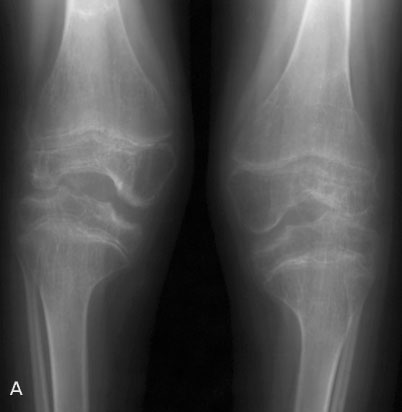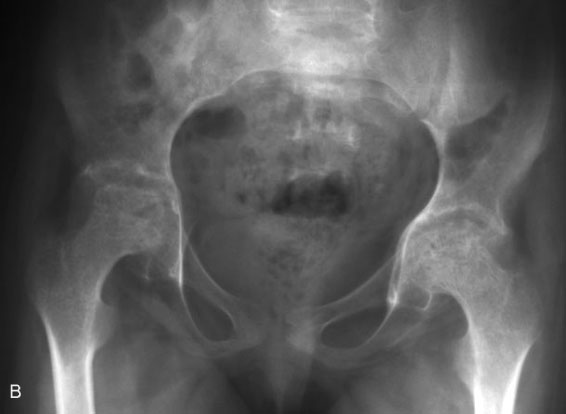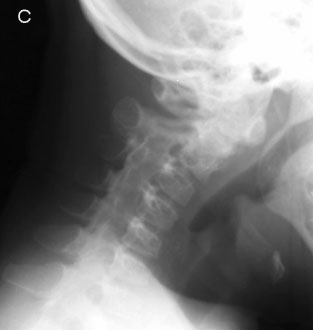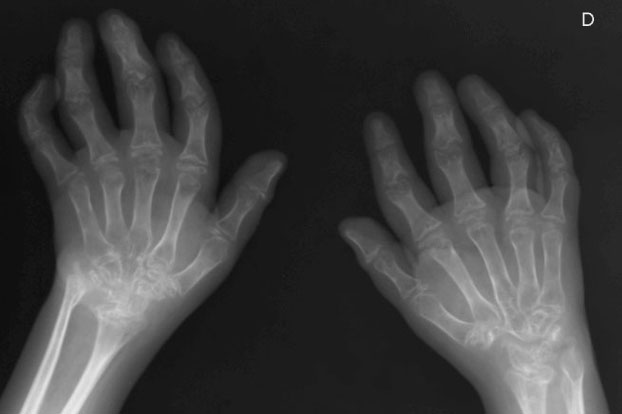Pediatric Radiology > Musculoskeletal > Metabolic Diseases > Juvenile Rheumatoid Arthritis
Juvenile Rheumatoid Arthritis
![]()
|
Juvenile Rheumatoid Arthritis (JRA) is a form of rheumatoid arthritis with onset before 16 years of age. JRA differs from the adult form of rheumatoid arthritis is many respects. First, 70% of patients are seronegative. Second, large joints are more commonly involved as opposed to the adult disease in which small joint involvement predominates. The most commonly involved joints in JRA are: knee (epiphyseal overgrowth with widening of the intracondylar notch) > ankle > wrist (small,square carpal bones) > hand > elbow > hip. Joint involvement is most often pauciarticular (between 2 and 4 joints) with JRA. Radiographic features of JRA:
Still's disease is an acute form of JRA that is associated with fever, rash, hepatosplenomegaly, and lymphadenopathy. Musculoskeletal involvement is rare in this JRA variant. |
|

|
 |
 |
 |
| Juvenile Rheumatoid Arthritis in a 10-year-old male. A, AP radiograph of the knees demonstrates bilateral epiphyseal overgrowth with widening of the intracondylar notch. B, AP radiograph of the pelvis shows marked destruction of both hip joints. C, Lateral cervical spine radiograph details ankylosis of the apophyseal joints. D, Radiograph of the hands reveals joint space narrowing and erosions of the intercarpal joints, right worse than left. |